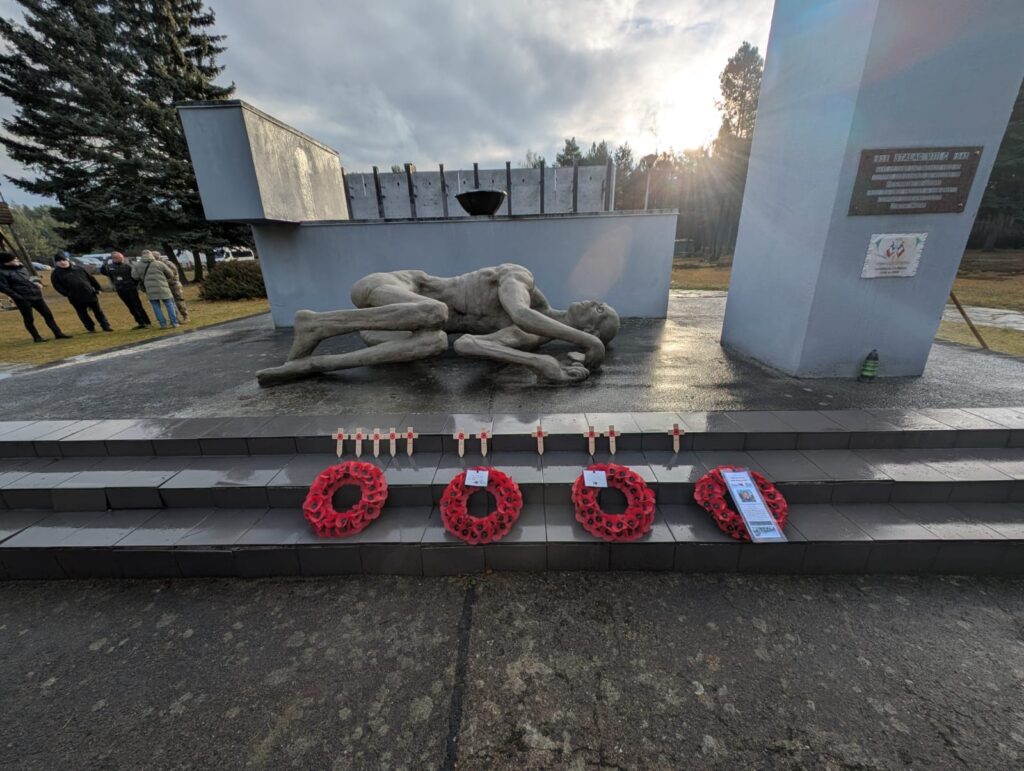
We hear from Kirsty Turnbull, Communications Manager at Lady Grover and the Officers’ Association, about her attendance, alongside her husband, Don, at the commemorative events for the anniversary of the Long March and their personal connection to this historic event.
In January 2025, I had the immense privilege of attending the 80th Anniversary commemorations of the Long March, a deeply moving chapter in UK military history that resonates not only with military personnel but also with families like mine, who share personal connections to this story of resilience and sacrifice.
For me, the event held special significance as Don’s uncle, Lt Eric Margetts RN, was one of the UK servicemen interned at Stalag Luft III, Hut 108 for four years of the war. In the harsh Winter of 1945, the PoWs of Stalag Luft III endured a harrowing 62-mile march in in sub-zero temperatures as they were moved West ahead of the advancing Red Army.. Joining us at the commemorations were Eric’s younger daughter, Jane, now in her mid-70s, along with one of her sons, William. While Jane and I reflected on the legacy of Eric and his comrades, William took an active role in the events, marching the same 62-mile route alongside around 250 military personnel from the UK, US, Poland and Germany plus family descendants—a poignant tribute to the endurance and camaraderie of those who marched 80 years ago.
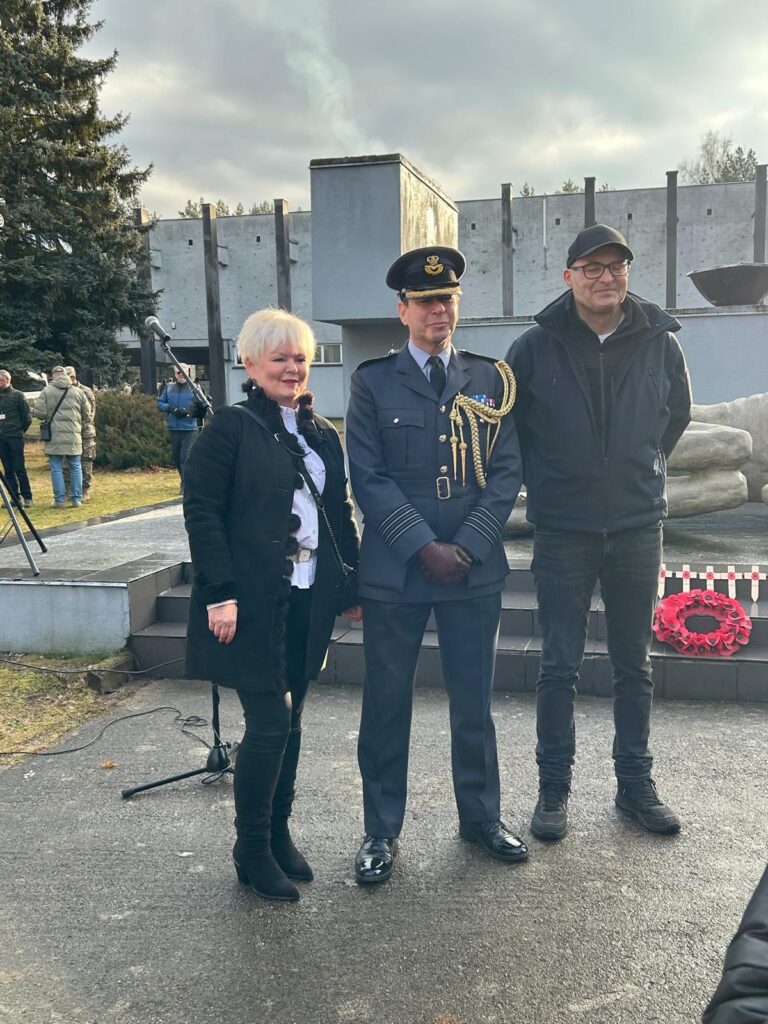
L to R: Deputy Mayor of Zagan, Gp Capt Chris Brown, British Defence Attaché, Poland, Marek Lazarz, Curator of Stalag Luft III & Stalag Viiic POW Camps museum at Zagan, Poland.
The History of the Long March
The Long March began on the night of 27 January 1945, as Soviet forces advanced westward. Over 10,000 Allied POWs, including aviators from various nations, were ordered to evacuate Stalag Luft III in Żagań, Poland. This is the prison where the famous ‘Great Escape’ took place over the night of 24-25 March 1944. Their journey—spanning 62 miles to Spremberg, Germany—was marked by relentless cold, exhaustion, and uncertainty. The evacuation coincided with the liberation of Auschwitz, a tragic testament to the chaos and desperation of the war’s final months.
Once at Spremberg, prisoners were loaded onto overcrowded cattle trucks and transported to other camps. Conditions were harsh, with little food, makeshift clothing, and no guarantees of survival. Accounts like those of Flight Lieutenant Raymond Keen paint a vivid picture of the ordeal: prisoners building sleds to carry the weakest among them, the biting cold numbing fingers and faces, and brief moments of solace offered by locals who risked their safety to provide food and water.
Eric’s letters and journals, preserved by the family, describe the grim realities faced by Allied prisoners of war. He wrote of moments of fear but also extraordinary camaraderie:
“It was not just about survival but about helping each other through. One man’s courage became all of ours.”
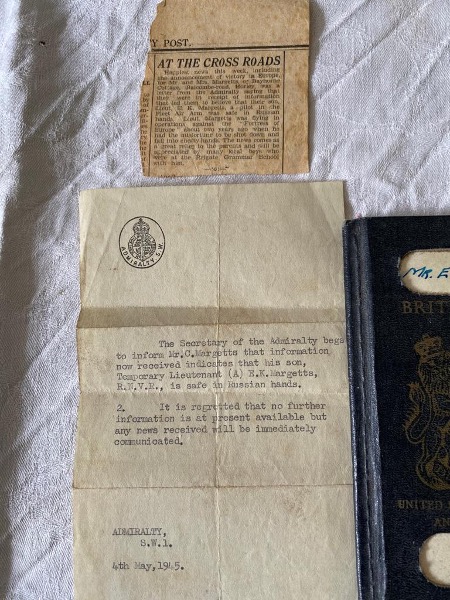
Marking the 80th Anniversary
The commemorative events in Żagań were both solemn and inspiring. They included a reenactment of the original 62-mile route to Spremberg, a journey that William proudly undertook, honouring the endurance of his grandfather and thousands of others. Alongside this was a series of commemorative activities:
- A service of remembrance in Żagań.
- Visits to historic sites and local schools where the POWs stopped and sheltered.
- Commemorative events, including wreath laying, attended by local civic leaders and supported by members of the local population.
- The culminating event, a formal Dining-In Night at Castle Klitschdorf, which provided a reflective and ceremonious end to the occasion.
These events brought together local dignitaries, RAF representatives, descendants of the POWs, and other participants to honour the resilience demonstrated by the men of the Long March.

A Personal Connection
Standing in Żagań with my husband Don, Jane and William, retracing Eric’s footsteps, we felt an extraordinary connection to both our family’s history and the wider legacy of those who endured the march. Seeing William take on the challenge of the reenactment was profoundly moving—a physical and symbolic act of remembrance.
Jane, reflecting on her father’s experiences, shared how his resilience and quiet strength had shaped their family. As Eric once wrote in a letter home:
“The hardships we face will pass, but the bonds we build will endure.”
For all of us, these events were a reminder of the importance of passing on these stories of courage and sacrifice to future generations.
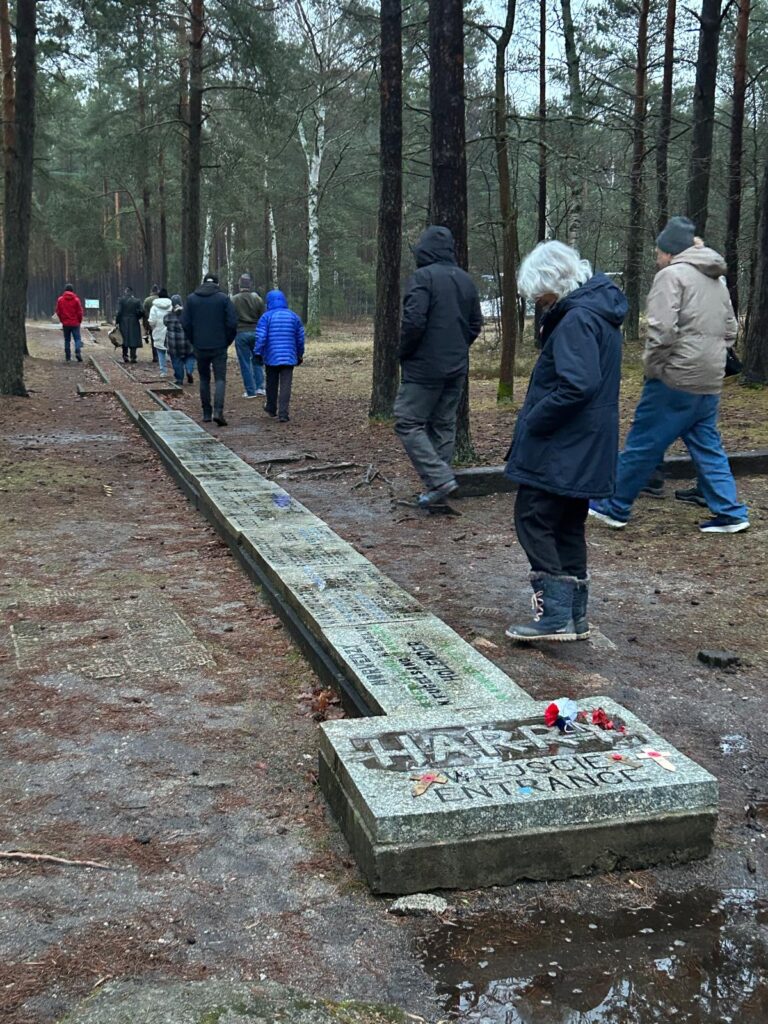
Jane Heyland at the marked entrance of tunnel Harry with all those named who tried to escape, in the ‘Great Escape’ from Stalag Luft III. The Great Escape took place over the night of 24-25 March 1944.
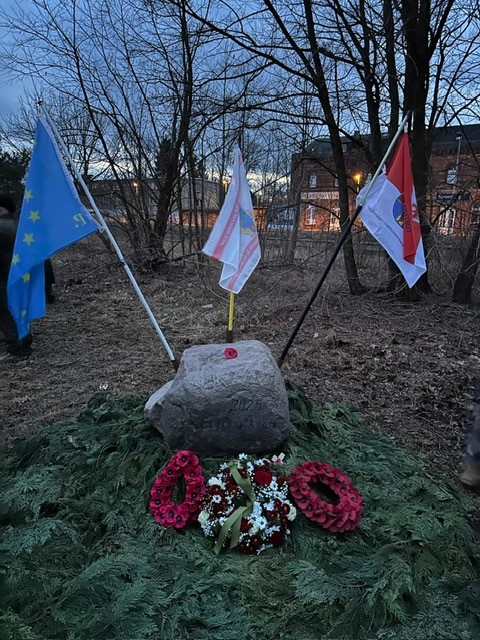
Spremberg Bahnhof
Parallels for Today
The Long March was not just a test of physical endurance but also a lesson in adaptability and leadership under extreme circumstances. These qualities—reflected in the RAF’s Agile Combat Employment (ACE) doctrine—remain as vital today as they were 80 years ago.
The commemorations serve as a reminder of how resilience, teamwork, and leadership transcend generations. They are qualities forged in moments of hardship, exemplified by Eric and his comrades, and carried forward by today’s RAF personnel.
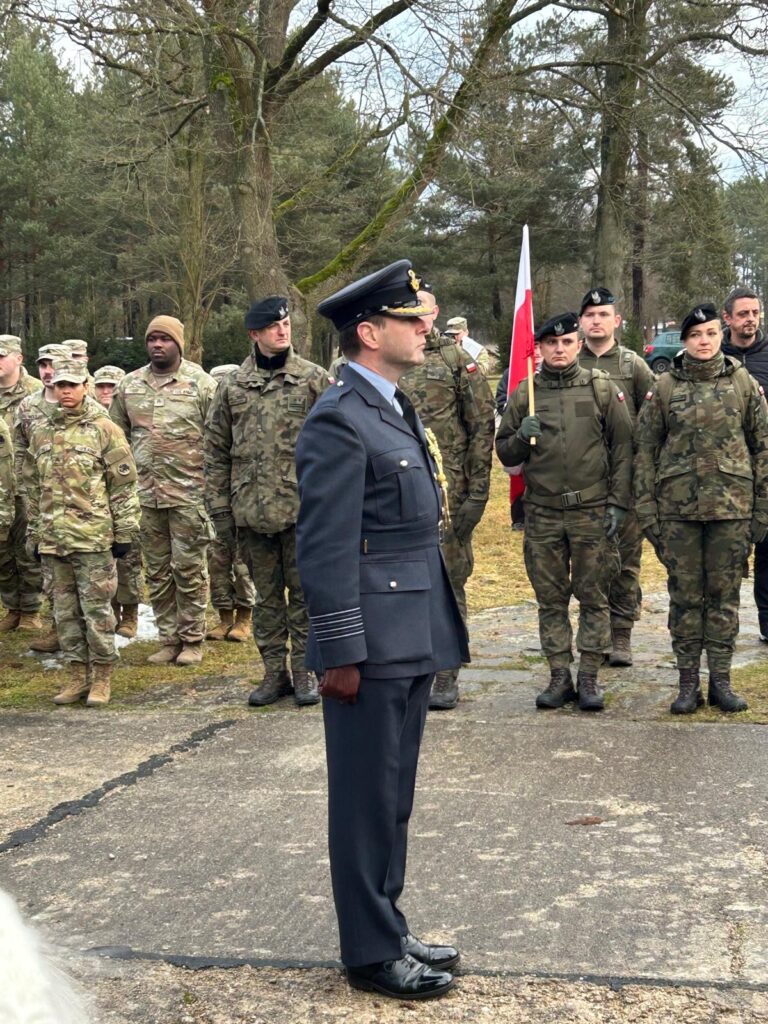
A Legacy of Strength
As William completed the march alongside others honouring this historic milestone, he embodied the spirit of his grandfather and the thousands who endured the march 80 years ago. Through events like these, we ensure that the sacrifices and bonds forged during the Long March are never forgotten.








